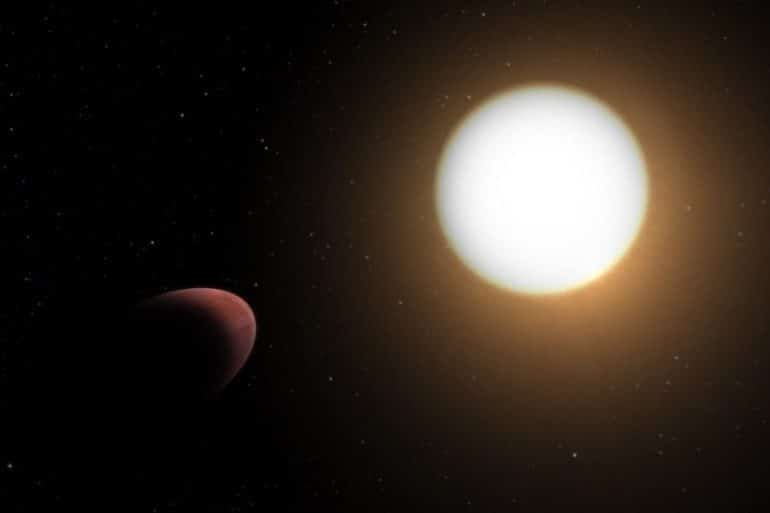A deformed exoplanet shaped like a rugby ball rather than a sphere has been announced for the first time by European astronomers.
The giant planet is WASP-103b located in the constellation of Hercules and has a size almost twice that of Jupiter and a mass one and a half times larger, while it is about 50 times closer to its star than the Earth to the Sun.
The exoplanet had already been discovered by the US Hubble and Spitzer Space Telescopes, but researchers at the Swiss universities of Bern and Geneva, as well as other European institutes led by Professor Jan Aliber, published the astronomical journal "Astronomy & Astrophysics", made their new observations with the European space telescope CHEOPS.
The deformation is due to the strong "tidal" forces exerted on the exoplanet by its parent star, in a similar - but much more intense - way to what happens in the Earth's tides. On our planet, tides are mainly caused by the gravitational pull of the Moon, which causes periodic accumulation of water in an area of the sea, resulting in water being withdrawn from neighboring areas and thus observing the alternating phenomenon of low tide and flood. But this deformation of the ocean is difficult to perceive from space.
In space, however, and especially in the case of this particular exoplanet, the applied gravitational forces are very extreme, resulting in WASP-103b, which is very close to its star and only needs one day to complete its orbit (this is its duration year), to deform dramatically to one side.
